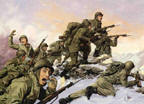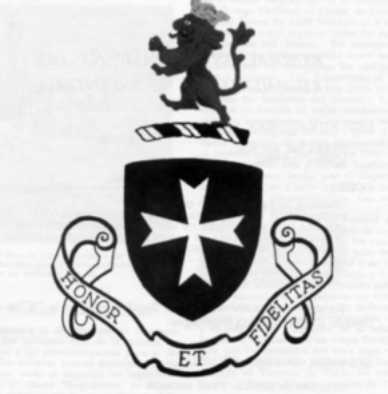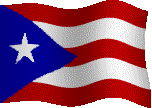Prelude to Inchon
The Puerto Rico Exercises of 1950
Copyright Col Gilberto Villahermosa
July 2004
On the eve of the Korean War the
United States armed forces conducted the largest Joint, airborne, and
amphibious maneuvers ever staged in peacetime, the Puerto Rico
Exercises (PORTREX). The purpose of the exercises were four-fold: to
provide training for three Services in the planning and execution of
Joint operations; to test existing Joint doctrine and gather
information concerning Joint amphibious-airborne operations; to test
the capabilities of new equipment and their suitability for Joint
operations; and to provide training for the defense forces of the
Caribbean Command. A fifth training objective, the simulation of
the tactical employment of the atomic bomb, was canceled late in the
planning phase. The maneuver phase of PORTREX began on 25 February and
lasted until 11 March 1950. Some 80,000 soldiers, sailors,
airmen, and Marines participated in the exercise, which was controlled
by 1,800 Marine Corps officer-empires, most of whom had seen combat in
the Pacific during World War II. The area selected for the
exercises was the small, narrow island of Vieques, located off the
eastern shore of Puerto Rico. The island was less than twenty miles
long and only two to three miles wide. The United States had acquired
about two thirds of Vieques in the 1940s and the Navy had used it since
1947 as a target and bombing range for the guns and planes of the
Caribbean Fleet. The island also served as a training area for the
Marines, who had staged amphibious landings there during the Atlantic
Fleet exercises of 1948 and 1949.
The PORTREX
scenario called for the Aggressor Forces, which had captured Vieques
and enslaved the inhabitants, to defend the island. The
Liberating Forces from the United States would conduct a seven-day air
campaign, followed by an airborne and amphibious assault to drive the
aggressor back into the sea and reestablish order in this
Western-oriented republic. Brigadier General Edwin L. Sibert
commanded the Aggressor ground forces, which were composed of troops
from his Antilles Command. The 65th Infantry, the Regular Army's only
Hispanic regiment, made up the core of the Aggressor ground forces. The
regiment was a relatively well-led and well-trained post-World War II
unit, having exercised with the Marines in amphibious operations on
Vieques in both 1948 and 1949, first as a floating reserve and then as
part of the amphibious assault force. For PORTREX the 65th was
augmented with soldiers from 33rd Infantry Regiment, another largely
Hispanic formation stationed in Panama. The Aggressor Forces were to be
entrenched in defensive positions in the central part of Vieques, while
the eastern tip of the island was to be used as an impact area for a
live, pre-invasion naval and aerial bombardment. The Liberating
Forces consisted of a regimental and a battalion combat team from the
3d Infantry Division's 15th and 30th Infantry Regiments, along with a
battalion combat team from the 82nd Airborne Division's 504th Parachute
Infantry Regiment. These 11,500 combat troops were augmented with
another 4,100 support troops as well as large naval and air assets,
including 17,000 Marines. Major General Percy W. Clarkson, the
Commander of the 3d Infantry Division, commanded the Liberating Force
ground forces.
Plans called for the Aggressor ground
forces to fortify the impact area and build barricades, demolitions,
and other obstacles on the beaches and defensive positions throughout
the island. The men of the 65th and 33rd Infantry Regiments spent
70,000 man days digging defensive positions, constructing underground
command posts (each large enough to house 15 to 20 indefinitely),
creating vast and intricate obstacle zones, and installing 380 miles of
barbed wire. They also registered their crew-served weapons, exercised
their communications equipment, conducted refresher training, and
rehearsed day and night counterattacks and withdrawals. “The Puerto
Ricans of the defensive force who began by building installations that
were really impregnable, went about behaving as though they were in the
business of blood, sweat, and tears,” wrote Hanson W. Baldwin, the
well-known and veteran New York Times war correspondent. “Their
camouflage was excellent” and “their fields of fire were properly
arranged.”
Early on the morning of 8 March,
D-Day, the first Navy shells began exploding on Vieques, signaling the
beginning of the ground battle. The battleship U.S.S. Missouri
fired 108 rounds from its massive sixteen-inch guns, while the
remaining 150 ships of the Liberating Force fleet fired more than
20,000 eight-inch, six-inch, and five-inch rounds. Then Air Force
bombers unleashed a long string of bombs. The explosions were felt
throughout the island. At about the same time, the 10,500 men of
the 3d Infantry Division began to move toward Red and Blue Beaches on
the island’s southern coast aboard hundreds of landing craft.
Yellow Beach, farther to the east, was slated to be used later to
offload vehicles and other heavy equipment. Overhead Air Force and Navy
fighters and fighter-bombers flew in support. On hand to observe the
landings were Secretary of Defense Louis Johnson, Secretary of the Navy
Francis P. Matthews, Chief of Naval operations Admiral Forrest P.
Sherman, U.S. Senators and Representatives, and the senior uniformed
officers of the four Services. When the first wave of landing
craft hit the beaches they were engulfed by concentrated mortar and
artillery fires (simulated), which inflicted forty percent casualties
and, along with the dense obstacles, stopped the landings cold. Umpires
assessed that, instead of knocking holes in the Aggressor’s defense,
the bombings had made them completely impassable. The Liberating
Forces suffered heavily as landing craft continued to bring in
successive waves of personnel and equipment under the intense mortar
and artillery barrage. As engineers and bulldozers struggled
unsuccessfully to open lanes through the tangled barbed wire, log
barricades, and other obstacles, wheeled vehicles jammed up on the
beaches, “and there is not much doubt,” wrote Baldwin, “that in actual
war casualties would have been heavy.” “Stopping the assault
forces at the water’s edge proved that the Puerto Ricans could hold
their own against the best-trained soldiers that the United States Army
could put into the field,” wrote Colonel William W. Harris, the
commander of the 65th Infantry Regiment. In his short time as
commander of the regiment, Harris had become the Army’s leading
advocates of Hispanic troops. But PORTREX was far from over. The
umpires called an administrative halt in the exercise and directed the
Aggressor forces to clear eight to ten lanes through the beach
obstacles so that the assaulting troops could come ashore. In the
meantime, waves of assault craft were diverted to the less heavily
defended Yellow Beach. After the Aggressor forces had cleared the
required number of lanes using tanks, the Liberating Forces continued
their landings on Red and Blue Beaches. The men of the 3d Infantry
Division lost no time in taking the fight back to the defenders and by
the end of the day they had carved out a sizeable beachhead one to two
thousand yards deep.
The division spent
its first night
ashore reorganizing, consolidating their position, and preparing for an
early morning assault. At dawn the 3d Division attacked along a
broad front. Under heavy pressure, the defenders responded with a
counterattack, preceded by heavy mortar and artillery fires. At
about the same time, the sound of low-flying C-119 Flying Boxcars
alerted the Aggressor Forces that an airborne assault was
imminent. When the paratroopers of the 504th BCT hit the ground,
the 65th Infantry hit them hard with preplanned artillery and mortar
fires as well as with an attack by the reserve battalion. A bitter
battle ensued and Major General P. J. Mueller, the Chief Ground Umpire,
assessed that the airborne battalion had suffered fifty percent
casualties as a result of the 65th Infantry’s attacks and that six of
the C-82s had been shot down with a loss of 180 paratroopers. Another
100 paratroopers were assessed as killed in the air. Thus, almost a
third of the almost 1,000 men that had jumped were assessed as killed
even before they had reached the ground. The paratroopers incurred
another ten percent casualties as the result of obstacles on the drop
zone. Finally, the men of the 504th BCT suffered sixty-one actual
casualties (sprains, bruises, twisted backs, and some broken bones)
when the men jumped in a fairly stiff breeze and landed in a
mesquite-strewn area. Still, the elite paratroopers managed to
inflict thirty percent casualties on the 65th Infantry’s reserve
battalion in the fighting. And later that evening they drove the
Puerto Ricans off the critical high ground overlooking the
beachhead. The stage was now set for an early morning breakout by
the men of the 3d Infantry Division. But by the following morning the
attack had ground to a halt. Colonel Harris later discovered that
Lieutenant General John R. Hodges, commanding all the invasion forces,
Rear Admiral Harold D. U. Baker, commanding the amphibious attack
forces, and Major General Clarkson, commanding the ground forces, had
been declared casualties. They had been met by a Puerto Rican soldier
dressed in native working clothes, who had handed the assembled
commanders a small present as a token of appreciation for their
liberation. “When the General opened the package in the presence of the
admiral and a pre-briefed umpire,” recalled Harris, “a small puff of
smoke came out of the box. Inside was a note which said, ‘This is a
booby trap – you are now dead.’” “General Hodges and Clarkson and
Admiral Baker were ‘restored to life’ by the umpires within an hour or
so,” reported Baldwin. “In the meantime their staffs and
subordinates carried the burden of command, and all hands learned a
realistic lesson in security.”
Colonel Harris, now
commanding all
Aggressor Forces on the island, decided to take advantage of the
resulting loss of momentum in the 3d Infantry Division attack.
That evening the regiment launched a spoiling attack with infantry,
tanks, and half-track mounted four-barrel .50 caliber machineguns,
preceded by an intense artillery barrage along with smoke. The tanks
quickly punched through the defenses of the Liberating Forces, followed
by the infantry, shot up the 3d Infantry Division command post, and
fought their way to the beaches shortly after breaking through. The
Aggressor Forces, however, were met with forty-two on-call aircraft,
each armed with three 500 pound bombs, which struck the tanks and
inflicted seventy-five percent casualties on the attacking force, but
only after considerable confusion and loss had been caused among the
Liberating Forces, delaying a planned attack.
The 3d Infantry Division did not
regain renew it assault until late in the afternoon of the third day.
That attack soon forced the 65th Infantry to withdraw northward to a
second prepared defensive position, but not before the artillery and
mortars of the Aggressor Forces had inflicted more than 300 casualties
on the attackers. The next morning the men of the 3d Infantry Division
shifted their main effort and even a battalion counterattack by the
Aggressor Forces could not slow their onslaught, forcing the Puerto
Ricans to pull back once again. “By a series of counterattacks,
shifting of artillery and mortar fires and some good footwork we were
able to avoid disaster and stay alive,” remembered Harris. But the
situation appeared grim for the Aggressor Forces. By the morning of D+5
the Liberating Forces had driven the 65th to the far side of the island
and their last prepared defensive positions. Behind them lay Purple
Beach and the waters of Vieques Sound. The men of the 65th and 33rd
Infantry had almost reached the limits of their endurance. Two
days still remained in the exercise and the 3d Infantry Division was
building up for one final all out assault to be delivered the following
morning. In response, Harris planned to launch a battalion-size
preemptive attack with infantry, tanks, and artillery, in order to win
some time and stave off final defeat for as long as possible. The
morning of D+6 opened with a roar as the Navy and Air Force began their
pre-attack bombardments. The 3d Infantry Division’s final attack
was just starting when the order was given for the 65th Infantry
counterattack to begin. Before it could be launched, however, an umpire
informed Colonel Harris that PORTREX had ended and that the regiment
would receive credit for the attack.
By the end of PORTREX Liberating
Forces had overrun two-third of Vieques and put ashore 14,250 men,
1,600 vehicles, and 35,000 tons of cargo. Another almost 1,000
men and additional supplies had also been dropped from the air.
Baldwin reported that PORTREX “shattered a number of precedents” and
“opened a new chapter in the technique of amphibious and joint
operations….The training was hard and realistic and the whole maneuver
better conducted and the troops, particularly the defense troops,
in a higher state of training than in any other amphibious maneuver
conducted since the war.” While the fundamental purpose of the
exercise had been to provide training in Joint planning and operations,
a number of other valuable training benefits had also resulted. The
Army and the 3d Infantry Division received training in large-scale
troop movements and amphibious landings. In addition, the 65th Infantry
and one battalion of the 33rd Infantry received training in defensive
tactics which, to some qualified observers, were superior to those of
the Japanese in World War II. The 504th BCT had trained in overseas
airborne operations along with its airlift unit, the 314th Troop
Carrier Group. And the three top command echelons received valuable
experience in Joint planning and cooperation. That experience would pay
major dividends less than six months later.
On 15 September
1950 the 1st
Marine Division and 7th Infantry Division of the U.S. Army’s X Corps,
supported by the might of the U.S. Navy and Air Force, conducted the
largest amphibious assault since World War II at Inchon, on Korea’s
western coast. Operation CHROMITE, the Inchon landing, was one of the
U.S. military’s boldest and most successful joint assaults ever. By the
time it was over, Seoul had been liberated, the North Korean People’s
Army shattered, with some 14,000 killed and another 7,000 captured, and
the United States military had regained the initiative and was on the
attack. Later that same month, the 65th Infantry Regiment arrived
in Korea along with the 3rd Battalion, 33rd Infantry Regiment, which
would serve as the regiment’s third infantry battalion for the duration
of the war. The successful combination during PORTREX had prompted the
Army’s leadership to deploy both units to Korea. In November, after
briefly serving with the 2nd and 25th Infantry Divisions, the 65th
Infantry joined the 3d Infantry Division in North Korea as that unit’s
third infantry regiment (the 30th Infantry having been stripped of
personnel to fill the 7th and 15 Infantry Regiments and left behind in
the United States). The Liberators and Aggressors of PORTREX would
fight side-by-side for the next four years to ensure a free and
independent South Korea.
Colonel Gilberto
Villahermosa is the
Chief, Combined Joint Task Force Coordination Branch at NATO’s Regional
Headquarters Allied Forces North, Brunssum, The Netherlands. His
articles have appeared in a number of magazines, including Armor, Army,
Military History, and Napoleon.
�Maps and Photos
Color Map of Puerto Rico.
Color Map of Vieques (United States
Navy)
Puerto Rican soldiers of the 65th
Infantry Regiment transferring to a landing craft during amphibious
training. In 1949 the 65th Infantry served as an amphibious
reserve during the Atlantic Fleet maneuvers. (Captain Thomas Guffain)
Colonel William W. Harris, who
commanded the 65th Infantry Regiment during PORTREX, became one of the
Army’s leading advocates of Hispanic troops. Six months after the
exercise Harris and his regiment found themselves in Korea. (National
Archives)
Using scaling ladders, men of the
United States Marines storm ashore at Inchon on 15 September 1950.
PORTREX laid the foundation for Joint cooperation and success at
Inchon. (National Archives)
�Sources
Hanson W. Baldwin, “Vieques ‘Invasion’
Slated for Today,” The New York Times,
March 8, 1950, p. 13.
Hanson W. Baldwin, “D-Day on Vieques
Finds Going Tough,” The New York Times,
March 9, 1950, p. 3.
Hanson W. Baldwin, “Navy Withdrawing
in Caribbean Area,” The New York Times,
March 10, 1950, p. 4.
Hanson W. Baldwin, “Last Action Today
in Caribbean War,” The New York Times,
March 11, 1950, p. 6.
Hanson W. Baldwin, “Vieques ‘Captured’
As Exercise Ends,” The New York Times,
March 12, 1950, p. 33.
Hanson W. Baldwin, “Portrex May Bring
Operating Changes,” The New York Times,
March 14, 1950, p. 2.
Critique Joint Puerto Rican Exercise,
FY 1950 Held at Vieques Island, Puerto Rico,
12 March 1950. Record Group 338
Records of the U.S. Army Commands, 1942,
U.S. Army Caribbean 1947-64, Box
44 Defense Plans and Maneuver Reports
1947-50, National Archives and Records
Administration, Washington D.C.
Directive for Implementing the Army’s
Participation in Joint Puerto Rican
Exercises, Fiscal Year 1950,
Department of the Army, Office of the Adjutant
General, Washington D.C., 7 November
1949, p. 2. “3rd Infantry Division,”
U.S. Army Center of Military History,
Force Structure and Unit History Branch.
Colonel (Retired) William W. Harris,
Puerto Rico’s Fighting 65th U.S. Infantry
(Novato, California: Presidio Press,
1980).
Jean R. Moenk, A History of
Large-Scale Army Maneuvers in the United States,
1935-1964 (Historical Branch, Office
of the Deputy Chief of Staff for Military
Operations and Reserve Force, U.S.
Continental Army Command: Fort Monroe,
Virginia, December 1969).
Colonel (Retired) Harry G. Summers,
Jr., “Inchon Invasion (Operation Chromite),”
Korean War Almanac (New York: Facts on
File, 1990)
Report on Participation on Exercise
PORTREX, Headquarters, Army Forces,
Exercise PORTREX, Ft. Benning,
Georgia, 15 April 1950, p. 5,
Record Group 338, Box 44 Defense Plans
and Maneuver Reports 1947-50, NARA.


 The 65th Infantry
Regiment
The 65th Infantry
Regiment

 The 65th Infantry
Regiment
The 65th Infantry
Regiment
